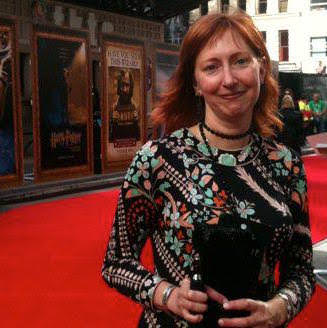How Co-Creator & Showrunner Aeysha Carr Transformed “Government Cheese” into a Series of Indie Film Experiences
If Wes Anderson and David Lynch partnered on a story set in 1969 about a Black family living in the San Fernando Valley, you might approximate the vibe of the new Apple TV+ show Government Cheese. The surrealist comedy is inspired by co-creator Paul Hunter’s childhood, and stars David Oyelowo as eternal optimist Hampton Chambers, a man chasing the American dream after being released from prison.
Hampton aims to repair the relationship with his wife Astoria (Simone Missick), sons Einstein (Evan Ellison) and Harrison (Jahi Di’Allo Winston), and best friend Bootsy (Bokeem Woodbine), but they’ve all built new lives while he’s been away. Paul Hunter, who is known as one of the country’s most prominent music video directors and who directed several episodes, grew up with a dad who was always coming up with grand ideas and schemes to better their lives. As Hampton, Oyelowo embodies the idea that nothing is impossible, regardless of harsh realities. In fact, circumstances are constantly conspiring to drag down his dreams. Hampton is looking for guidance from God, and messages are all around him, but he finds them either confusing or not to his liking, which leads to trouble.
Hunter and co-executive producer/writer Aeysha Carr (Woke, Uncoupled, Brooklyn 99) use themes from diverse spiritual belief systems to build story and develop character, and the results are bizarre, funny, and poignant. Each half-hour episode is like its own little independent movie that leverages elements of magical realism while staying grounded in the real world.
We chat with Carr, who says Apple TV+ gave her free rein to create a truly unique series. She talks about her experience in conversation with The Credits.
Each episode is its own little indie film. How did you make that decision?
We did the pilot, and we did it with this take on a Coen Brothers movie, and then I remember I had to write episode 2, and I thought we should just make a short film. We had to create all this back story and I wanted to present it in a way that didn’t feel unwieldy. So I thought we could create what felt like a PBS film, with a narrator. Every time we came to a place where we asked how we could impart the information, we used that device. We were really taken away from TV norms, and both Paul and I love independent films, so once we made that first decision, we realized we could do pretty much whatever we wanted. It freed us up. I remember I was so scared when we showed Apple the opening, but they loved it, so I knew we’d be fine.
Episode 7 is focused on Astoria. That’s important as part of a show about a family patriarch.
That episode is where we delve more into the story of the mom. We had an amazing female director, Stacey Passon, and the whole episode came together so beautifully. It’s such a male-heavy show that it’s so much fun when you have a very strong and independent woman centered in an episode with completely weird elements. And again, Apple was all in. It was a joy to give Simone Missick the episode where it’s just her because she’s amazing, and Astoria has a great story. For me, Astoria wanting to have a life outside her home, where she found this awakening while Hampton was away, was essential for me to showcase. I came from my aunts and my mother, and they can all literally make a dress in one day. They have so many skill sets and are all highly creative, and I wanted to lean into that truth with Astoria.
Cinematographer Matthew J Lloyd and costume designer Nancy Steiner are very important to the show’s look and tone.
The look was very specific. Paul, coming from directing these amazing videos, was into having really striking images. Matt Lloyd was so good. He has all these weird camera angles, or tilts the camera to get a different perspective. It was really everyone coming together to tell the story we wanted to tell consistently. Nancy is truly amazing in how she gets her period pieces, but I also think they don’t look like costumes; they look like something we might wear today, and I think that gave it another level of realism.
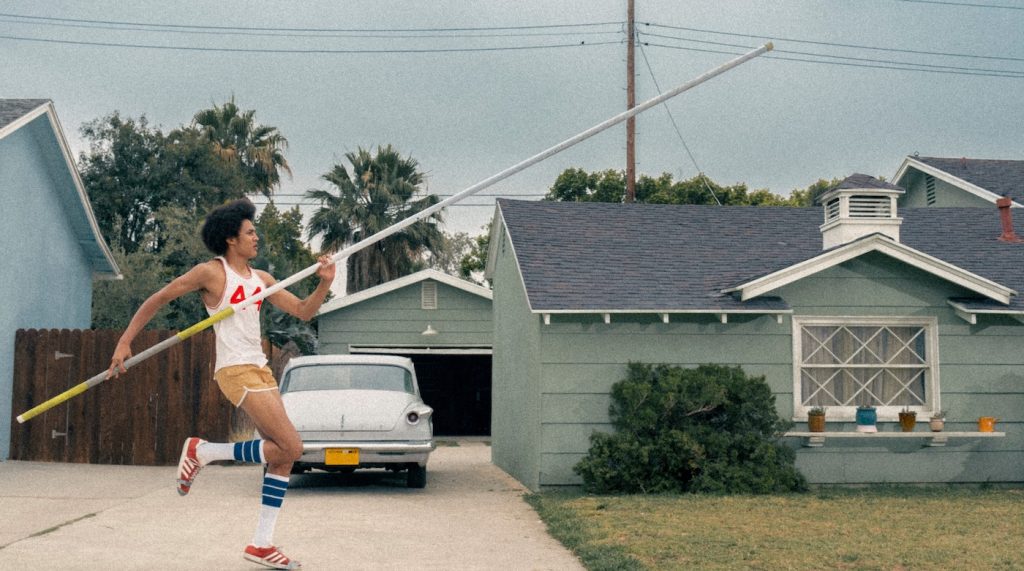
Government Cheese was filmed in the San Fernando Valley. What were some of the challenges and benefits of capturing a place that was true to Paul’s childhood and the original basis for the show?
It was all benefits. The reason people don’t shoot in LA is financial reasons. David was the one who was championing us filming in LA, and since the whole story takes place in The Valley and David lives there, they made it a priority. We lost some of the budget for other elements, because the budget was the same, but shooting there made a huge difference to the authenticity of what you see onscreen. We found places that hadn’t been touched, streets that were exactly the same as they were in 1969. There’s beautiful neon and storefronts, and it all offers such a depth visually. We were in Chatsworth and in Lake Piru. Shooting the real places for what’s in the script is just beautiful. I drove to places in LA I’d never been before. Those locations are just very true to where Paul grew up. They’re very LA, and they read very LA., and so it adds a depth to the script and to the story.
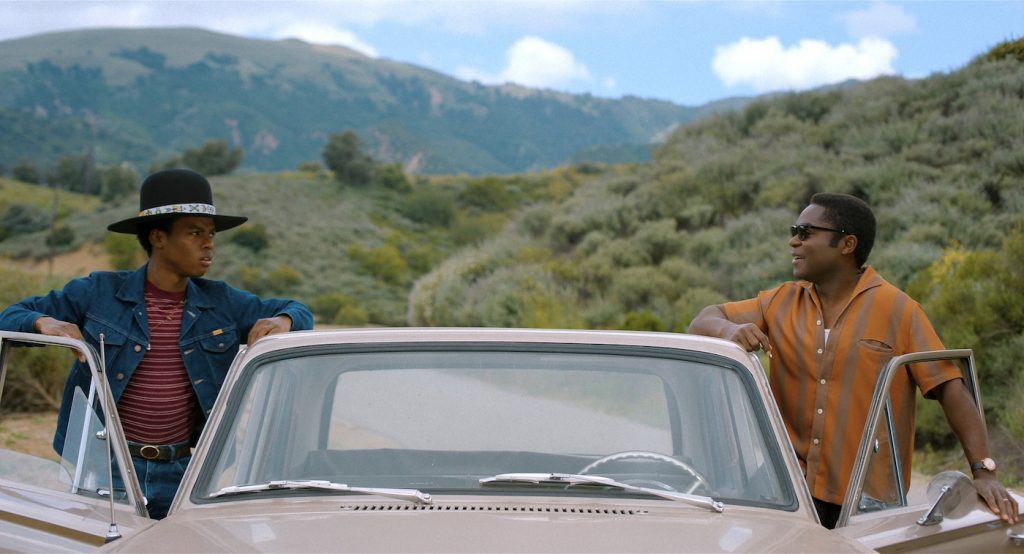
What was your experience of collaborating with David Oyelowo, who also acted as executive producer on the project?
David thinks about every word he says. It has to ring true and be true to his character. He brings as much as you can write on the page, and plans for how it’s going to go. David came to the set and brought a different depth to Hampton, and elevated him in a way far beyond what Paul and I could see, with this bright-eyed, bushy-tailed hyper-optimism. For him, Hampton’s truth was that he loved Astoria. We tend to write these male characters who cheat or are unfaithful, but as much as he did wrong, his love for Astoria was his driving force. By honing in on that, the audience can actually forgive some of the stuff he does or has done, because of his undying commitment to and love for Astoria.
The characters of the show, including the guest stars, have some very strong spiritual elements. A great example is Sunita Mani as Edith in Episode 3. How much did you lean on world religion in creating the characters that help guide Hampton?
That was important. I think Bootsy has a little bit of a Buddhist in him that rounds out the religiosity of the show. We find ways to reference multiple religions because there’s truth in all of them, and they’re all correct. Sunita was a counterpoint to Hampton’s Catholicism and Christianity, more earthy and spiritual, but she was giving him the same information. The idea was that it was coming from many different places, God speaking through many different channels. Sunita was supposed to be the weird, hippie, Mother Earth, universal girl, as an acknowledgement of all the different dualities, or the many paths to one truth. Hampton’s relationship with God, even though it is based on the bible, is very different. In the first episode, we refer to“The Gospel of Kenny Sharp,” which is the idea that anyone can be an apostle. Anyone can be a prophet, it’s just how you look at them.
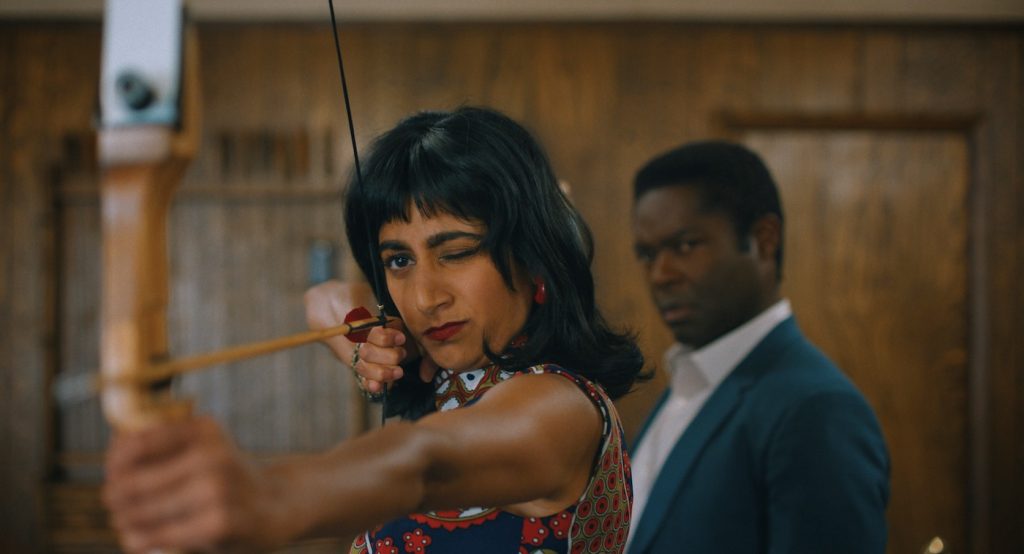
There is an element of magical realism in the show. How is that achieved technically?
Paul, as a director, doesn’t use a lot of VFX or CGI. There’s very little of that in Government Cheese. For us, it was about shooting things that are really happening, or at least attempting that. A lot of people lean into what they can magically do with CGI, and watching it, the audience knows that could never really happen, and that takes the stakes out. Really leaning into reality in those moments of magical realism, even with Sunita and how she moves through the world, we used camera tricks, which makes it so much more impactful. The scene that is shot underwater is done with practical effects. All that was really important to Paul, and I think it reads really well onscreen.
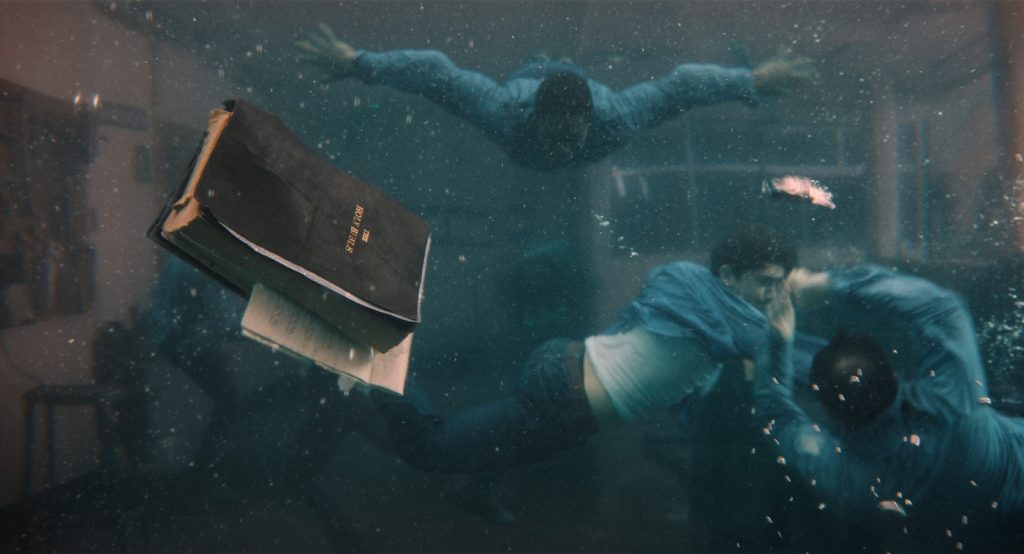
What are you hoping audiences will get from the show?
My talking point is this idea that anything is possible. I think TV has gotten really dark. Much of it is beautifully done but just gut-wrenching. Paul and I wanted to write something that had a lot of joy in it, something that went down easy and was beautiful and artistic, and I think we stayed committed to that.
Government Cheese is streaming now on Apple TV+.
Featured image: Evan Ellison, Jahi Di’Allo Winston, David Oyelowo and Simone Missick in “Government Cheese,” now streaming on Apple TV+.

